WC Fields once famously proposed his own epitaph.
“On the whole, I’d rather be in Philadelphia.”
For Fields, he saw Philly as the epitome of a boring and provincial town, somewhere he was happy to leave on his way to fame and fortune. Still, it was better than the alternative.
Ok, it’s an apocryphal story, as he is buried in Forest Lawn Cemetery, just outside of LA, and without any inscription on his grave besides his dates. Still, it got me thinking of my many trips to cemeteries. Where we may end up, could be no different from our time above ground.
* * *
“All I ever wanted to do was to paint sunlight on the side of a house.”
Edward Hopper lived a solitary life like the pictures he painted. Not one to socialize, he used his wife Josephine as his main model in countless works. Despite living above the bustling life of Washington Square Park, he felt most connected to the world in his summer home in Cape Cod. By the shore, he wasn’t bothered to try to paint humans, or least hide them in the landscape. Instead, he painted lighthouses, cliffs, solitary beach houses and the sea.
When visiting his gravesite in Nyack, NY where he was born, we were struck by how the gravestones were all so spread apart from each other. No need to socialize in the afterlife either for Hopper. And he had selected a site perfectly positioned at the top of a hill, full of light and pointing out to see the beautiful rolling hills that descended to the Hudson River, a landscape he could easily paint for an eternity. His only companion on the top of the hill was his wife Jo, who died shortly after him.
For Charlie “Bird” Parker, both his life and death didn’t go as planned. He got his chops at the jazz clubs on 12th Street and Vine in Kansas City but wanted out as soon as he could. New York City was where he was crowned the King of Bebop, having a club named after him, and revolutionizing jazz forever. With all the fame that followed, his demons soon followed too. The coroner conducting his autopsy mistakenly believed he was examining the body of a 60-year-old man. Bird was only 34 at the time of his death.
His momma insisted he return to Kansas City. It was no hometown heroes' welcome. The local paper, the Kansas City Star ran a scant obituary, misspelling his name and getting his age wrong too. Things continued to be mishandled for Charlie, as the engraver put the wrong dates on his tombstone. And things weren’t much improved when the newly corrected memorial was unveiled. While the dates were finally right, the artwork of the tenor saxophone above them was not. The problem was, Bird never played the tenor, rather he played the alto sax throughout his career.
Things were finally made right for Parker when a mighty statue of his head was erected in the Jazz District. The statue's green color has a similar patina to that which graces Lady Liberty. Both statues free our spirits—one with her poem, the other with his horn. On his birthday every August, there is a festival in the Jazz District, while devoted fans pilgrimage to his gravesite as well. When I came to pay my respects, a young saxophonist was already there. He was laying his newly bought instrument on the grave, hoping for Charlie’s blessing. Later, I was curious who else might have shown up that day? Scrolling through pictures online, it was not only humans celebrating Parker, even a chicken was spotted roaming the cemetery, also paying its respects. Just as the inscription says under the statue in the Jazz District, “Bird Lives.”
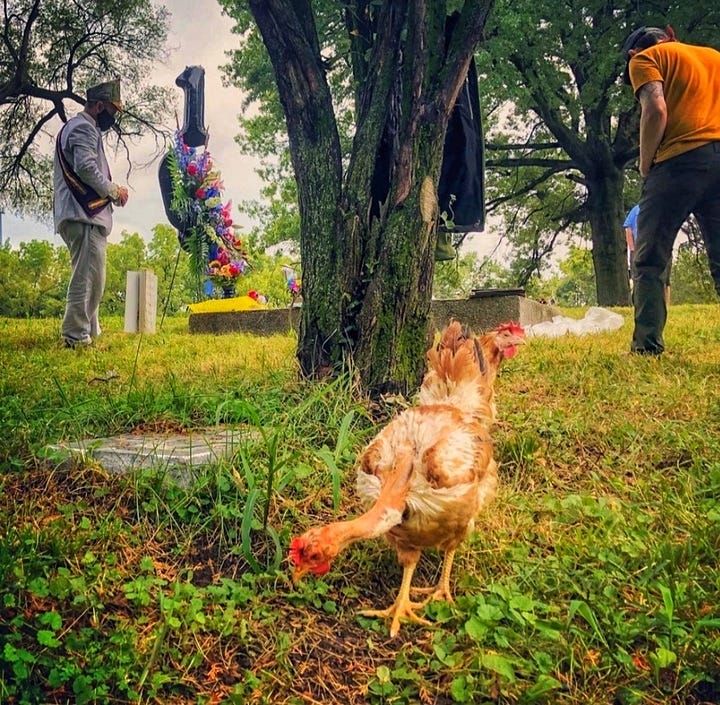

“The reports of my death are greatly exaggerated.”
This was Mark Twain’s response after there were false reports he was gravely ill or dead. Like his death, the quote turns out to be slightly exaggerated too and a bit apocryphal.
But for the townspeople of Madrid, NM (population 287), many have taken Twain’s quote to heart. Madrid (pronounced MAY-drid) began as a mining town, turned into a coal town, turned into a ghost town, and then in the 60s, transformed into an artist enclave for people living off the grid. It is filled with artisan shops, funky waterholes and a famous Christmas parade every year led by a yak. But it’s not necessarily the living inhabitants that my good friends took me on a road trip to see. They knew I’d be more interested in the townspeople's second realm up in the hills
To the locals, it’s known as the Bone Orchard, while the iron arch above us read “Land of the Dead” as we crossed over the portal. It was two cemeteries for the price of one. There was the traditional side, with graves dating back to the 1920s and before, for the coal miners who lived there. There are headstones and statuary for the wealthier townspeople, while simple crosses are placed for those who couldn’t afford more.
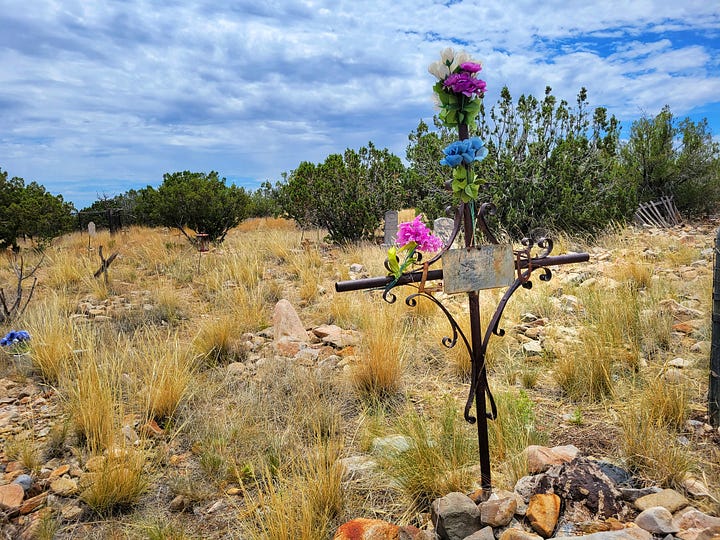
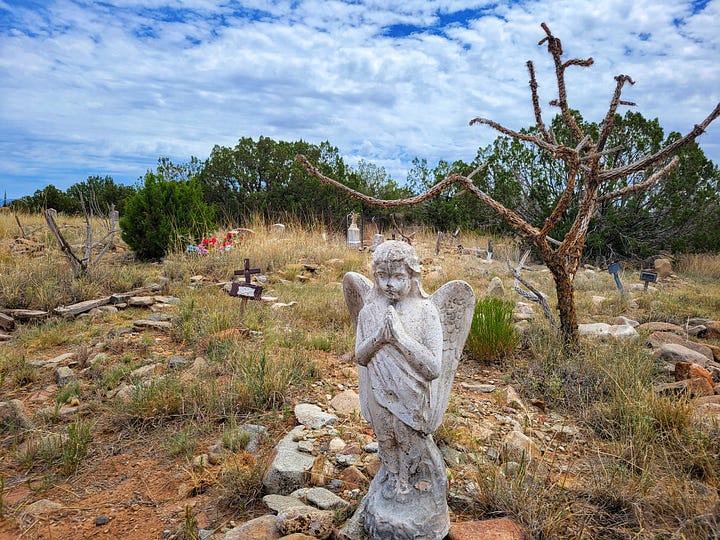
Next door to this more formal cemetery is a combination folk art sculpture garden and graveyard free-for-all, the final stop for the hippies that started coming to this little town in the 60s. Whatever hootenanny happened below in Madrid, it continues in the Bone Orchard. Not bothered by losing their mortal coil, many are buried underneath their favorite pastimes—now able to sew, play their guitar, or ride their bike forever. There is even a stage and seating set-up so the living and dead can continue to party with each other. In the end, one of its resident named Scary Larry gets the last laugh, his tombstone giving the finger for eternity.
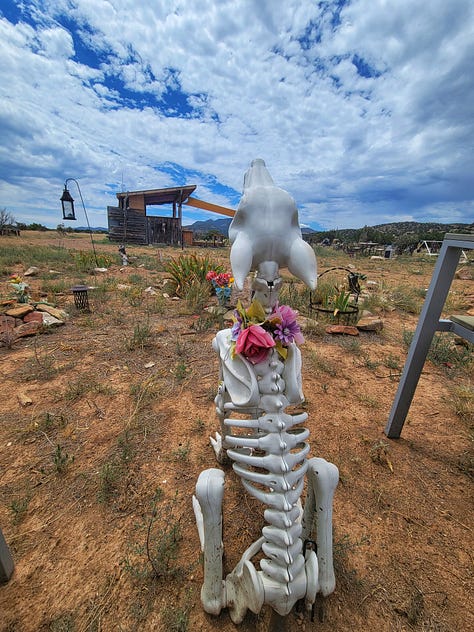
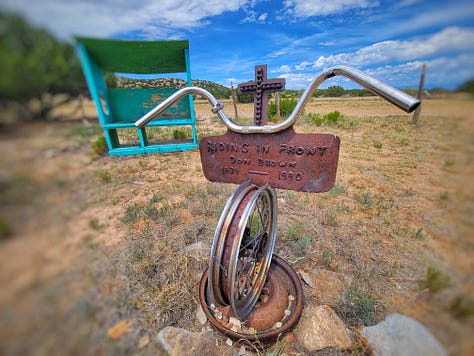
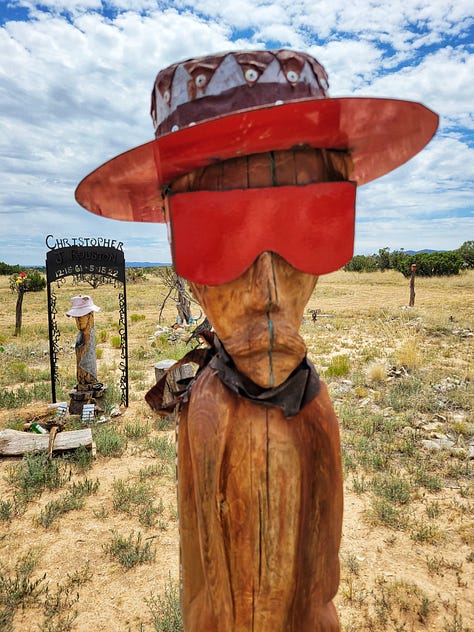
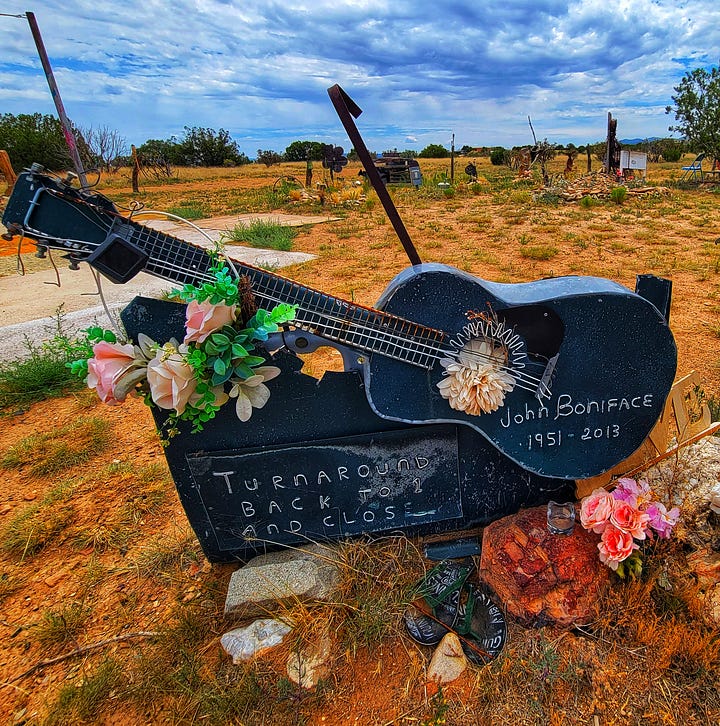
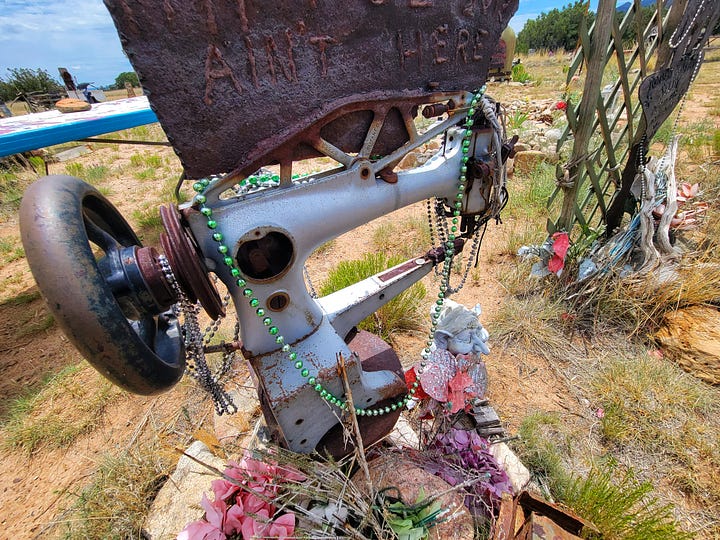

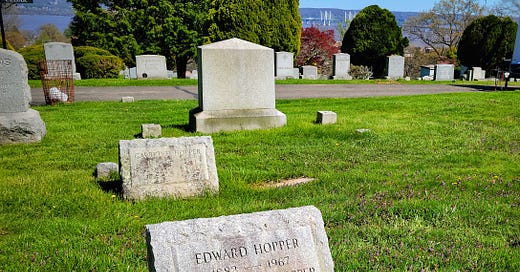




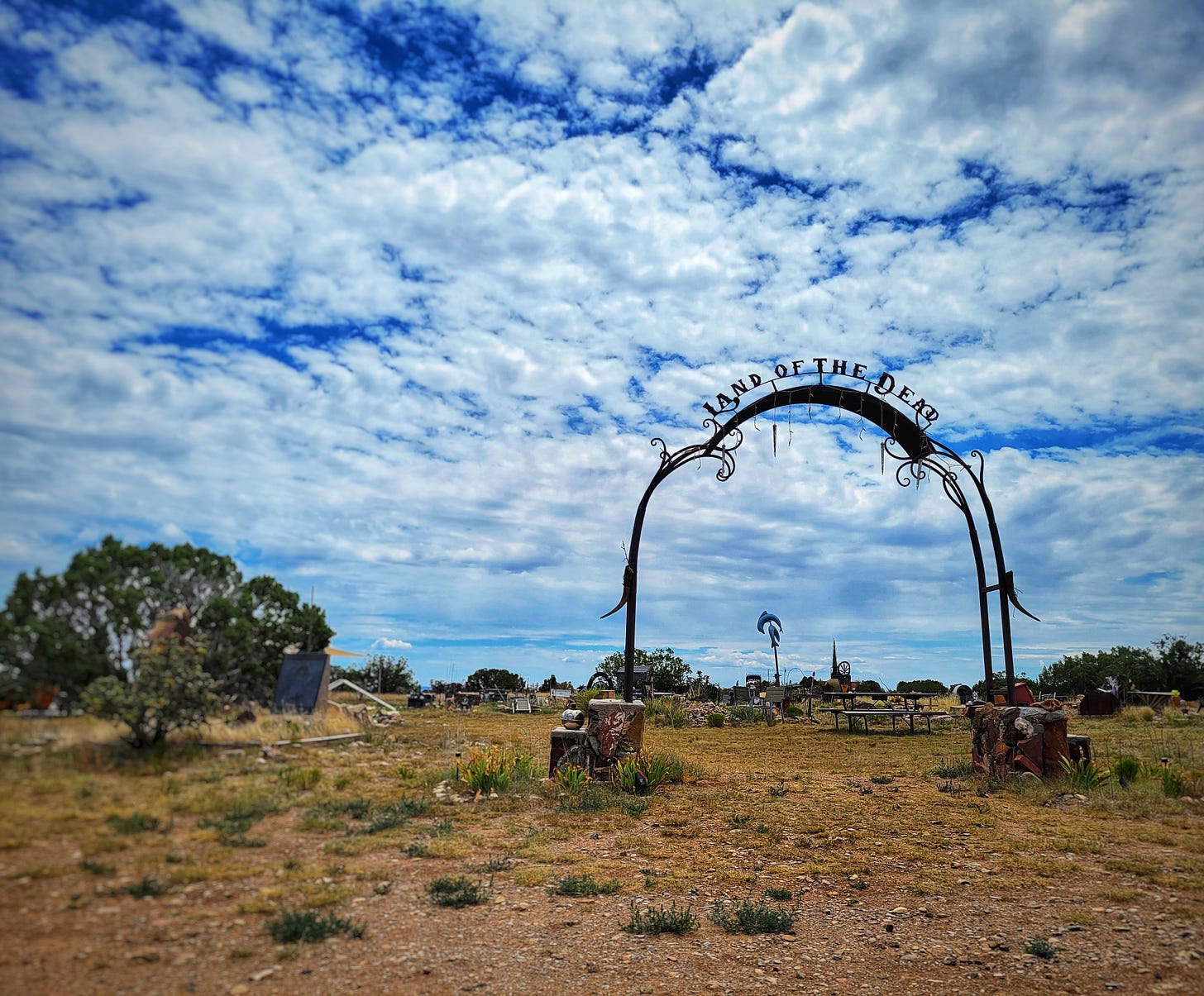

A few of my favorite places. Well done….ha that’s an good epitaph.
Beautiful tributes, sir.